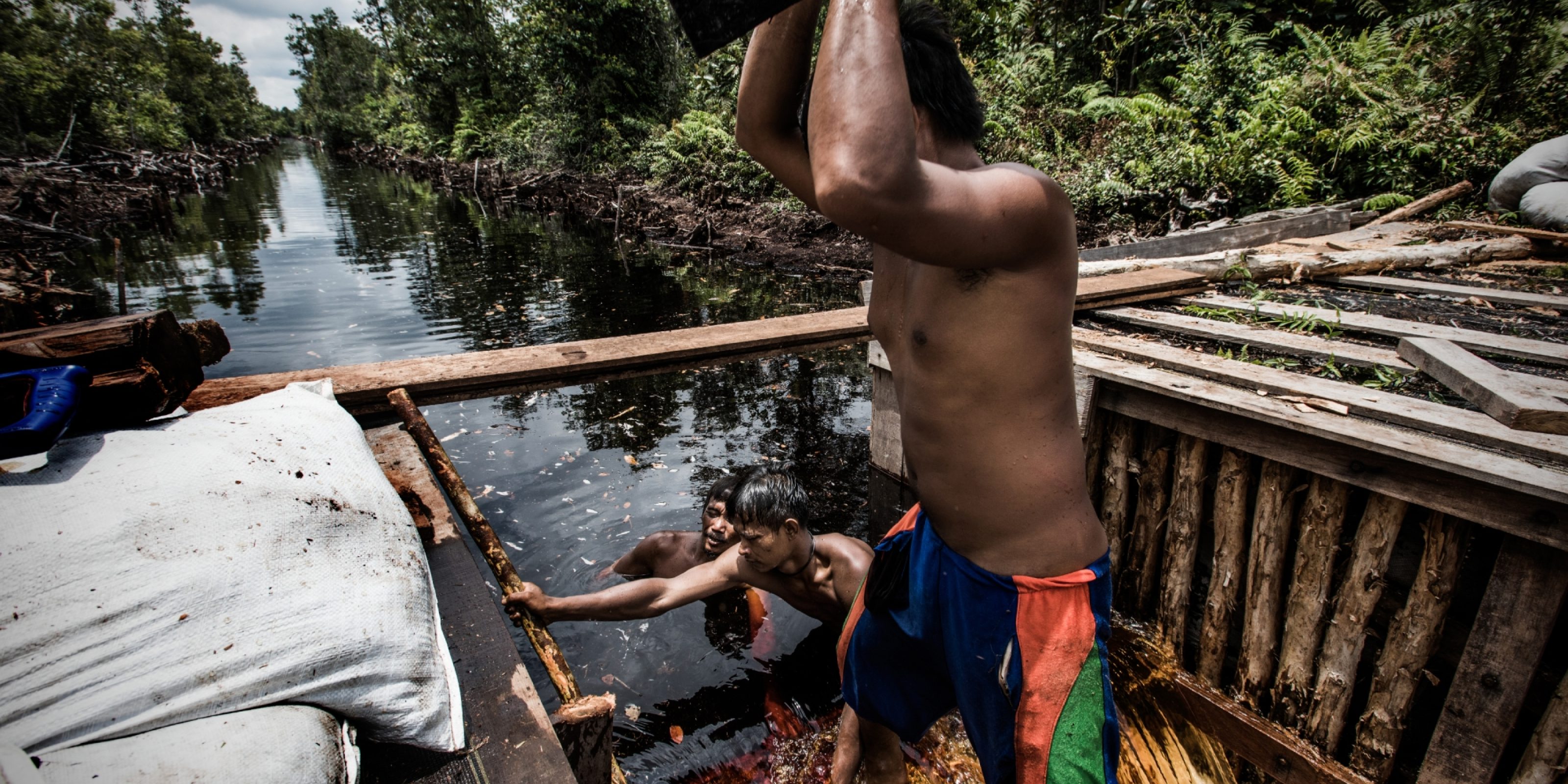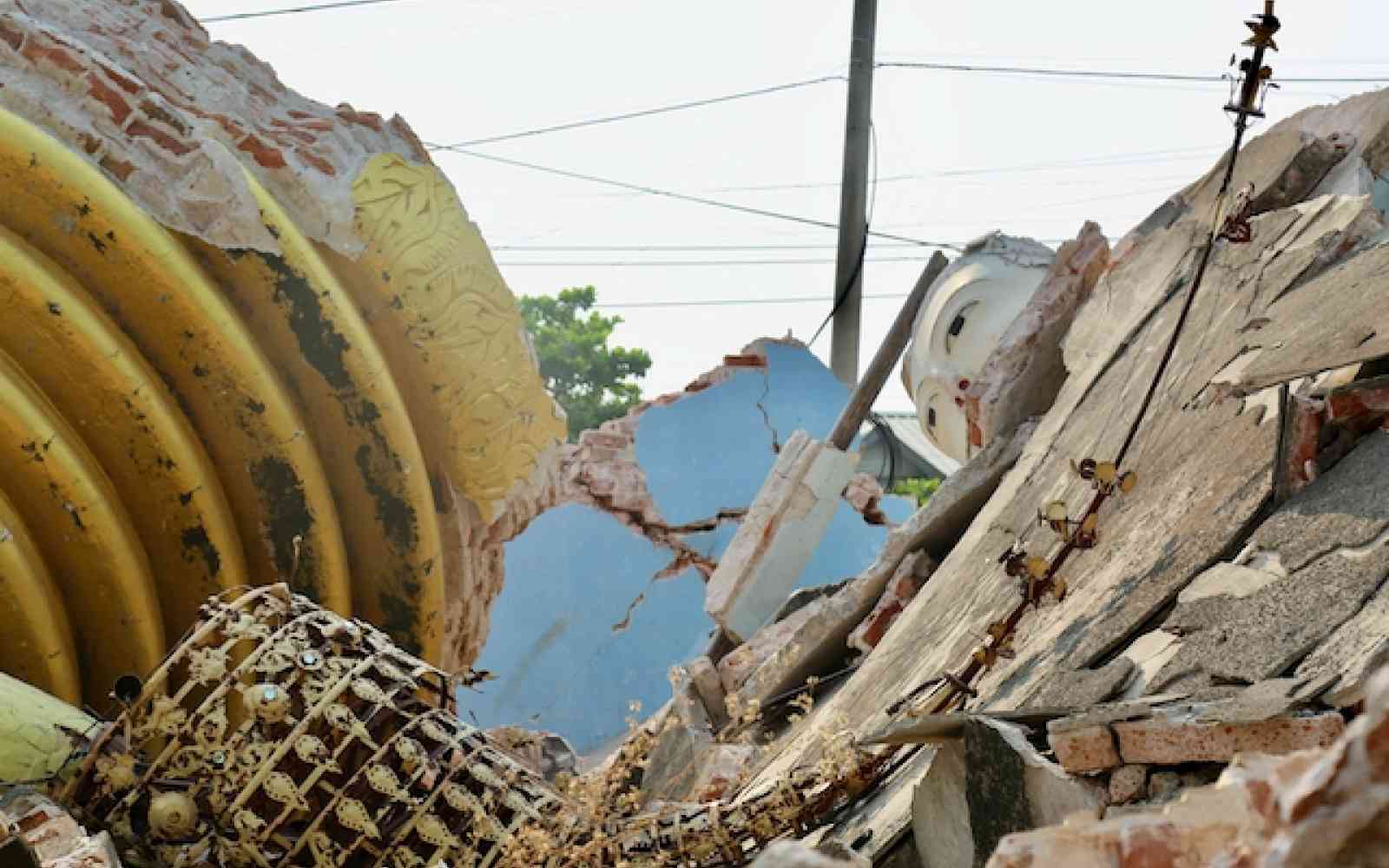The United Nations Office for Project Services (UNOPS)

Up in smoke
Described by many in the international community as an environmental disaster, Indonesia's forest and peat fires affect the health, education and livelihoods of millions of people in the region.
From August to November 2015, Indonesia struggled under a thick blanket of haze.
The haze didn’t come from volcanic ash, nor the country’s growing coal industry and expanding transportation sector, but from something equally insidious and perhaps even more dangerous – burning peat.
Indonesia is home to half the world’s tropical peatlands, which are areas covered by organic soil that form over time as decaying plants fall to the ground and compost. In its natural state, tropical peat occurs in flooded swamps and is one of nature’s most effective ways of removing carbon from the atmosphere, helping to mitigate global warming.

But decades of draining peatlands to support palm oil, paper and rubber plantations, as well as smallholder farms, has left large areas of peatland dried out.
Peat, essentially, is an early stage of coal – and like coal – is highly flammable.
The dried out land quickly goes up in flames as landowners use fire to cheaply clear debris to prepare the land for planting season.

Despite being illegal in many areas, clearing peatland by fire remained widespread throughout Indonesia. Fires usually occur during the dry season – approximately from July to November – but El Nino conditions made 2015 particularly calamitous.
Southern Kalimantan, on the island of Borneo, and western Sumatra were among the worst hit areas.

Bidan Erna, Senior Midwife at Puskesmas Panarung, Palangka Raya, recalls what it was like working during this time: “It was in the morning around October 2015, when two women came in for abortions for their six-month old fetuses because of prenatal death. After those two women, there were three more women that came in the same day. It was so sad. I believe this was all caused by the lack of oxygen and high concentrations of toxin from the forest fire haze.”
The full extent of the costs and the long-term impacts are not yet known. But estimates suggest the 2015 Indonesian fires affected 43 million people – 500,000 people were treated for respiratory diseases, more than 2.6 million hectares of land was burned and there was approximately $16.1 billion in economic damages.
The haze – or toxic smoke – from the 2015 fires contained carbon monoxide, cyanide, ammonia and formaldehyde, in concentrations far beyond safe limits. The particles were so tiny that they penetrated the lungs, going directly into the bloodstream, causing widespread cardiovascular sickness, birth defects, low birth weights and sometimes death.
- Draining and burning peatlands further worsens global warming by releasing large amounts of greenhouse gases.
- Bees can’t navigate in the haze, causing fruit not to be pollinated and grow.
- Orangutans and other forest animals starve from lack of fruit and other food.
Much needed change
One of the biggest challenges Indonesia faced for fire prevention efforts was simply getting groups together to talk, plan and budget. Efforts were often siloed and a lack of coordination created confusion.
To help in this, the Government of Indonesia, UNOPS and the US Agency for International Development – in close partnership with UN Environment – established the Generating Anticipatory Measures for Better Utilization of Tropical Peat (GAMBUT) project in 2015.
GAMBUT activities revolve around a computer-based forecasting tool —the Fire Risk System— that predicts high fire risk areas. Using this tool, the project team plans activities from facilitating fire prevention planning between national ministries, to rehabilitating dried out lands, to supporting locally based fire prevention groups.
Local fire prevention groups are supported by field staff that view fire prevention and preparedness as more important than suppression. These working groups then work with local firefighting teams so they can share plans, budgets, and react more nimbly to upcoming and ongoing fires.

A little over a year into the project, progress has already being made. To date, programming has been completed for the Fire Risk System, hundreds of officials have been trained in its use across two provinces, and fire prevention forums have been established in all eight GAMBUT districts.
Communities and local governments are now aware of fire solutions, and are planning ahead to address them, making communities more prepared than ever for the upcoming fire season.

These fires are making our community sick, killing our crops and making us poor and hungry...
“...We are happy to have GAMBUT here helping us find a way to work together and make sure that a year like 2015 never happens again,” said one Kalimantan district official.
Following the 2015 fires there was a renewed emphasis by the Government, at the highest levels, to better manage the country’s peatlands. A suspension on all activities that could damage peatlands was issued and the President establisted the Peatland Restoration Agency charged with restoring approximately two million hectares of degraded peatland.

With a wetter rainy season, fires in 2016 were down more than 80 percent compared to 2015. There's no way of knowing what's in store this year, or the next, but the right mix of environmental management, regulations and enforcement, and community participation could serve to better protect Indonesia's peatlands and help mitigate climate change as a whole.
Project details
As the implementing agency for the Government of Indonesia and US Agency for International Development, Office of Foreign Disaster Assistance project, UNOPS works with the Ministry of Forestry and Environment and the Directorate General for Climate Change Control to implement the GAMBUT project.
GAMBUT works using a multi-pronged approach to fire prevention and suppression through piloting activities at both the national level, and locally in two fire-prone provinces, Sumatra and southern Kalimantan.
The GAMBUT project is centered around a computerized fire risk prediction tool - the Fire Risk System. Using this tool to identify high fire risk areas, GAMBUT supports various fire prevention and suppression interventions, including canal blocking, fire fighter training, procurement of fire and safety equipment, fire detection cameras, and support for local fire forums, which allows for coordination between government, land owners, local leaders, NGOs, and local commercial interests who may have a stake in fire prevention or suppression.












